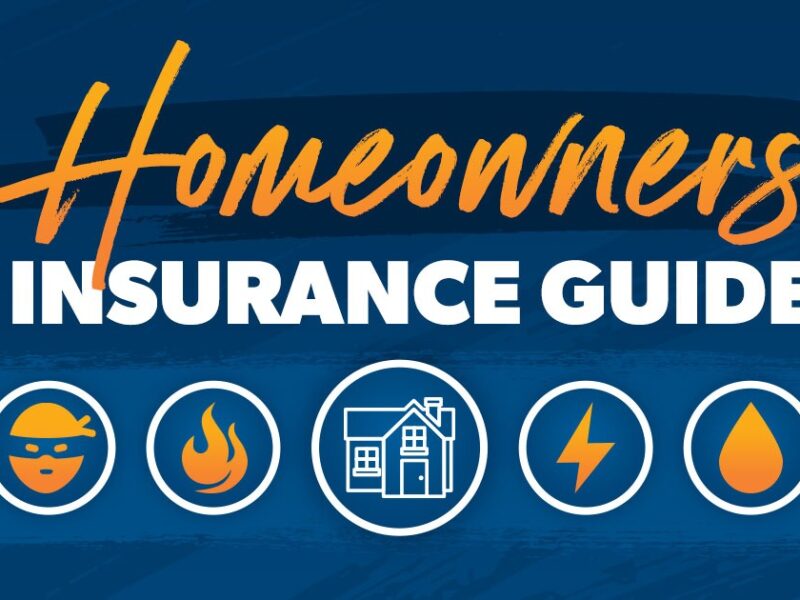Types of Homeowners Insurance
Understanding the different types of homeowners insurance can help you choose the right coverage for your needs. Here’s a breakdown of the most common types:
1. HO-1 Basic Form
The HO-1 policy is the most basic type of homeowners insurance. It covers a limited range of perils such as fire, theft and vandalism. This policy is rarely offered today because it provides minimal coverage and is considered outdated compared to more comprehensive options.
2. HO-2 Broad Form
HO-2 policies offer more extensive coverage than HO-1. They cover a broader list of perils, including damage from falling objects, snow and ice. This type of policy is ideal if you want more protection but still at a relatively lower cost.
3. HO-3 Special Form
The HO-3 policy is the most common homeowners insurance form. It provides coverage for all perils except those explicitly excluded in the policy. This form is highly recommended as it offers broad protection for your home and personal property.
4. HO-4 Renters Insurance
If you’re renting a property, an HO-4 policy is designed specifically for renters. It covers your personal belongings and liability but does not cover the physical structure of the property, which is the landlord’s responsibility.
5. HO-5 Comprehensive Form
An HO-5 policy provides the most comprehensive coverage available for homeowners insurance. It covers all perils, except for a few specific exclusions. This policy is ideal for those who want extensive protection and are willing to pay a higher premium for it.
6. HO-6 Condo Insurance
For condo owners, the HO-6 policy provides coverage for personal property and the interior of the condo unit. It also covers liability but does not include coverage for the building structure, which is typically covered by the condo association’s insurance.
7. HO-7 Mobile Home Insurance
HO-7 policies are tailored for mobile or manufactured homes. They offer coverage similar to HO-3 but are designed to address the unique risks associated with mobile homes.
8. HO-8 Older Home Insurance
The HO-8 policy is specifically for older homes that may not meet the current building codes. It provides coverage based on the actual cash value of the home rather than replacement cost, which is important for homes that may be difficult or expensive to rebuild.
How Homeowners Insurance Works
Homeowners insurance works by providing financial protection against covered losses. Here’s a step-by-step breakdown of how it functions:
- Premiums: You pay a regular premium to the insurance company. This can be done monthly, quarterly or annually.
- Coverage Limits: Your policy will specify the maximum amount the insurer will pay out for different types of claims, such as damage to the structure, personal property or liability.
- Deductibles: Before the insurance kicks in, you’ll need to pay a deductible, which is an out-of-pocket amount that you must cover for a claim to be processed.
- Claims Process: If damage or loss occurs, you file a claim with your insurance provider. The insurer will then assess the damage, determine the payout based on your coverage limits and policy details and reimburse you accordingly.
- Exclusions: Be aware that not all risks are covered by homeowners insurance. Common exclusions include flooding, earthquakes and wear and tear. For these, you may need additional coverage or separate policies.
Top Companies Offering Homeowners Insurance
Several companies stand out in the homeowners insurance market due to their extensive coverage options, customer service and competitive rates. Here are a few of the top providers:
1. State Farm
State Farm is one of the largest and most well-known homeowners insurance companies. They offer a variety of policy options, including HO-3 and HO-5, with customizable coverage to fit different needs. State Farm is praised for its strong customer service and wide network of agents.
2. Allstate
Allstate provides comprehensive homeowners insurance policies with various coverage options. Their innovative tools, like the Digital Locker for home inventory and their extensive discounts make them a popular choice among homeowners.
3. Geico
Geico is known for its affordable rates and user-friendly online services. They offer a range of policy options and discounts for bundling with auto insurance. Their easy claims process and competitive premiums are attractive features.
4. Progressive
Progressive offers flexible homeowners insurance policies with options for additional coverage. Their use of technology for managing policies and filing claims makes them a convenient choice for tech-savvy homeowners.
5. USAA
USAA is a top choice for military families and veterans, offering comprehensive homeowners insurance with exceptional customer service. Their policies include unique benefits and discounts for service members and their families.
Advantages of Homeowners Insurance
Investing in homeowners insurance comes with several benefits:
1. Financial Protection: Homeowners insurance provides financial protection against significant losses due to damage, theft or liability claims. It ensures you’re not left with hefty repair or replacement costs.
2. Peace of Mind: Knowing that you’re covered in the event of a disaster or accident provides peace of mind. It allows you to focus on other aspects of your life without worrying about potential financial burdens.
3. Liability Coverage: Homeowners insurance often includes liability coverage, protecting you from lawsuits if someone is injured on your property or if you’re responsible for damages.
4. Mortgage Requirement: Most mortgage lenders require homeowners insurance as a condition for the loan. This requirement ensures that the property is protected, safeguarding the lender’s investment.
Disadvantages of Homeowners Insurance
While homeowners insurance is beneficial, there are some drawbacks to consider:
1. Cost: Premiums can be expensive, especially for comprehensive coverage or in high-risk areas. The cost of homeowners insurance can add up, particularly for those on a tight budget.
2. Exclusions: Not all risks are covered by homeowners insurance. Common exclusions like flooding or earthquakes may require separate policies, adding to your overall insurance expenses.
3. Deductibles: You’ll need to pay a deductible before your insurance kicks in. This means you could face out-of-pocket expenses before receiving any reimbursement for a claim.
4. Coverage Limits: Policies come with coverage limits, which might not always cover the full cost of repairs or replacements. It’s essential to review and understand these limits to ensure adequate protection.
What You Need to Know
Before purchasing homeowners insurance, there are a few crucial factors to consider:
1. Assess Your Needs: Evaluate the value of your home and belongings, as well as any potential risks specific to your area. This will help you determine the right type and amount of coverage.
2. Compare Policies: Don’t settle for the first policy you come across. Compare coverage options, premiums, deductibles and exclusions from different providers to find the best fit for your needs.
3. Understand Exclusions: Be aware of what is and isn’t covered by your policy. This knowledge will help you avoid surprises and ensure you have the necessary additional coverage if required.
4. Review Regularly: Life changes and so do your insurance needs. Regularly review your policy to ensure it still meets your requirements and update it as necessary to reflect any changes in your home or lifestyle.
Homeowners insurance is a critical safeguard for protecting your home and assets. By understanding the types of policies, how they work and the leading companies offering them, you can make informed decisions to secure the right coverage for your needs. Weighing the advantages and disadvantages will help you navigate the complexities of homeowners insurance, ensuring you find a policy that offers peace of mind and financial protection.





